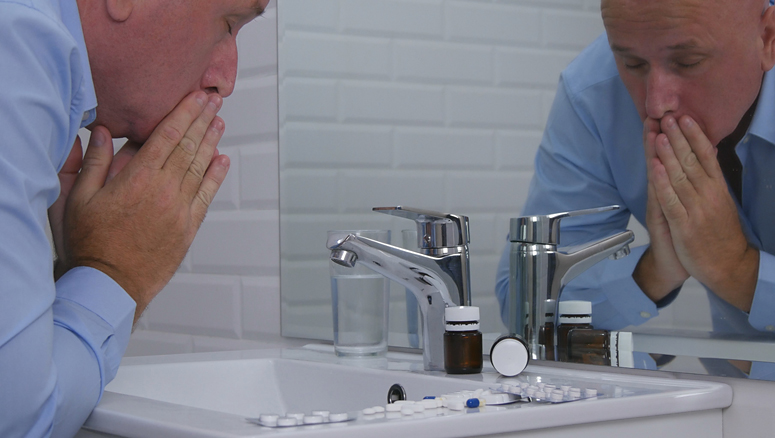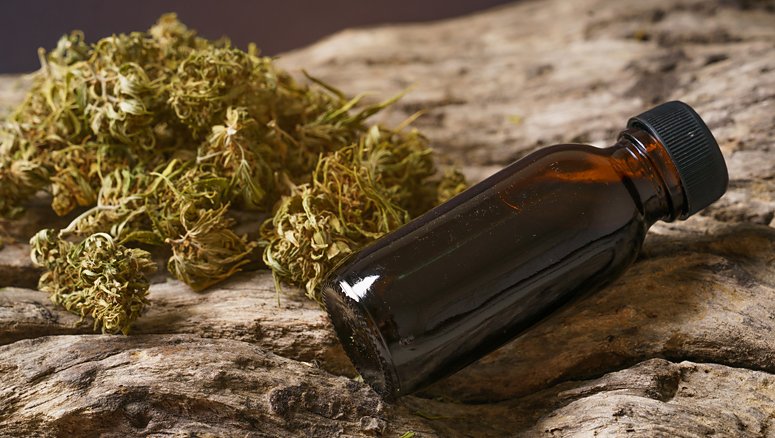Signs and Symptoms of Addiction Explained
Addiction represents a complex brain disorder where an individual repeatedly and compulsively engages in certain activities – often involving the use of addictive substances – despite the adverse and sometimes devastating consequences. This disorder is broadly categorised into two main types: drug addiction, which includes alcoholism and involves the compulsive intake of addictive substances, and behavioural addiction, where the compulsion is to partake in specific activities or behaviours.
Although these categories may share similarities in the underlying mechanisms and the impact they have on the addict and their surroundings, our focus here is primarily on drug addiction. The key factor in both addiction types is the alteration of the brain’s reward system. Both addictive substances and behaviours alter the brain’s reward system, which is a key reason behind the development of addiction.

Identifying Addiction
This discussion focuses on a range of symptoms and behaviours that are often, but not always, seen in addiction. The absence of certain symptoms does not conclusively rule out addiction, just as the presence of one or several symptoms doesn’t necessarily confirm it either. However, in most cases, addiction does tend to reveal itself through a range of symptoms.
Despite these variations, many cases of addiction do manifest through certain symptoms. Addiction can profoundly affect an individual’s life in multiple ways – physically, mentally, emotionally, and financially. These effects are often hard to conceal, despite efforts to do so.
The signs of addiction can manifest in various aspects of a person’s life. Changes in personality, daily habits, social interactions, appearance, personal hygiene, dietary and sleep routines, sexual behaviour, language, financial stability, and overall perspective can all be indicators of addiction. Furthermore, addiction often accompanies other issues like physical illnesses or mental health conditions, which may present their own symptoms.
A key sign of addiction, however, is an individual’s self-awareness of their struggle. If someone believes they are addicted and has tried unsuccessfully to stop, this is a strong indication of addiction, regardless of how it may appear externally. This self-recognition is a crucial step towards seeking help.

Physical signs of addiction
Understanding addiction requires recognising that it presents differently in each individual. It’s a highly complex condition where typical symptoms may not always be evident. Each person’s specific experience with addiction, even to the same substance, can vary significantly, and those addicted to different substances may show markedly different signs.
Understanding the physical symptoms of drug abuse is crucial, as they significantly vary from one substance to another. For instance, the physical appearance and behaviour of a person frequently injecting heroin will be markedly different from those of someone using a stimulant like cocaine, and again from an individual influenced by hallucinogens.
While simply taking a drug does not necessarily mean an addiction, if someone frequently shows signs of being intoxicated, whatever the drug, it’s a cause for concern. This consistent appearance could suggest that their drug use is regular enough to be problematic, possibly indicating addiction. For example, seeing someone occasionally high on cocaine at parties might not mean they have a problem. However, if every time you see them they are high, it’s much more likely their drug use is excessive.
It’s important to note that certain physical symptoms are generally associated with addiction, regardless of the specific substance. These can include persistent tiredness and fatigue (which may affect job performance), significant changes in sleeping and eating patterns, neglect of personal hygiene and appearance, ongoing nausea or flu-like symptoms, red and watery eyes, dental issues such as gum disease, itching, muscle spasms and tics, skin disorders, noticeable weight loss (or in some instances, weight gain), episodes of dizziness or fainting, teeth grinding or jaw clenching, incoherent speech, frequent sweating or shivering, a persistent smell of alcohol or other substances, and shaking or trembling. These signs may point to habitual substance abuse and possibly addiction.

Fast Access to Residential Treatment
We are currently able to offer fast access to private inpatient treatment.
Please call us today and speak to one of our expert advisors.
Call today in confidence: 0800 0148 970
Behavioural signs of addiction
Again, different substances can trigger a variety of behaviours in those using them. For instance, the actions of someone abusing strong sedatives will differ significantly from the behaviour of an individual who has taken stimulants.
A key indicator to watch for, regardless of the specific substance, is a sudden and noticeable change in someone’s typical behaviour, as this could indicate substance misuse or addiction. For example, if someone who is generally calm and relaxed starts to show signs of agitation, unexpected energy surges, or aggressive behaviour, this might indicate the influence of drugs, although not definitively so.
Behavioural symptoms commonly seen across all addictions, no matter the substance, could include unexpected mood changes, often forgetting things, depression, shifting social circles, changes in how one speaks, dresses, and the types of social activities they enjoy, significant changes in sexual desire and behaviour, being untruthful, an increased desire for solitude, always arriving late, missing days at work or school, an unstable work record, a lack of enthusiasm, losing interest in hobbies previously enjoyed, an evident worsening in financial situation, the frequent need to borrow money, feelings of paranoia, a noticeable reduction in the ability to think clearly, sleeping at odd hours, getting easily annoyed, which might lead to regular disagreements with family, friends, and colleagues, often vanishing from social events without any explanation, engaging in theft or other illegal actions, possession of items linked to substance use, proposing the use of drugs in social settings, even when it’s clearly inappropriate, and generally acting in ways considered unacceptable by society.
It’s crucial to understand that the presence of one or a few of these signs doesn’t automatically mean addiction. If you notice such behaviours in someone, jumping to conclusions without a deeper understanding of the situation is not advised, as there could be other reasons for their actions. However, it is a matter of concern if many of these symptoms are noticed together.

Emotional signs of addiction
The emotional impact of addiction is both deep and extensive. The substances at the core of addiction often have a significant emotional effect, while the broader impact of addiction ravages an individual’s self-esteem, future aspirations, and interpersonal relationships. Depression is a common and devastating consequence of addiction, leading to an alarmingly high number of suicides. Significantly reduced self-esteem and feelings of worthlessness, coupled with intense despair and existential anxiety, are common emotional responses to the challenges of addiction. However, the consumption of the preferred substances can also lead to temporarily heightened moods while under their influence.
Due to both the immediate and long-lasting effects of the substances used, as well as the overall impact of addiction, an individual’s ability to emotionally connect with others can often be severely compromised. For instance, they might find it challenging to return feelings of affection or care, or even to experience love. Trusting others can be particularly difficult for someone with an addiction, partly because they may have found themselves in the company of unreliable individuals due to their drug use, and partly because they might struggle to trust themselves after failing to keep various personal or social commitments due to their need for substances.
It’s common to see a range of emotional disorders in individuals with addiction. While drastic emotional fluctuations or significant changes in emotional state are not inevitable consequences of addiction, they are frequently observed in those who are affected.

Recognising unhealthy drug use in family members
Noticing a dramatic alteration in behaviour is a key sign that someone might be excessively using alcohol or drugs, possibly indicating an addiction. Those closest to the individual, typically family members, are usually the first to notice such shifts. They are also likely familiar with specific personal traits, such as recognising signs of distress or dishonesty that others might miss.
However, it’s often tough for people to accept that a loved one could be involved in substance misuse or be at risk of addiction. Denial, whether intentional or not, can lead to overlooking signs that might be clear to outsiders. It’s essential to understand that addiction is a disease that can affect anyone. Dismissing the possibility of addiction in a family member with thoughts like, “That couldn’t happen to X,” is understandable but potentially harmful.
If you suspect a family member may be dealing with addiction, it’s important to know the signs and symptoms. If you observe any, consider other reasons they might be occurring before concluding it’s due to addiction. Yet, it’s also vital not to entirely dismiss the idea. The unfortunate reality is that being part of a family doesn’t grant immunity against the temptations and dangers of substance abuse, which can potentially lead to addiction.

Though no one can go back and make a
brand-new start, anyone can start from
now and make a brand-new ending
Addiction Signs and Symptoms Depending on Substance
The symptoms of addiction can vary significantly with each substance, highlighting the importance of recognising how different drugs affect individuals. A common indicator of addiction is frequent or constant use, making it essential to identify how this use presents itself across various substances.
In addition to the immediate effects of intoxication, the aftermath and, in some cases, the long-term consequences of regular use can also vary greatly. This section focuses on specific signs associated with the abuse of and addiction to various substances, including marijuana, hashish, and other cannabis-related products.

Barbiturates, benzodiazepines and hypnotics
In the UK, barbiturates, benzodiazepines, and hypnotics, which include sedative-hypnotics, are prescribed for a variety of conditions. These include insomnia, other sleep-related issues, anxiety, convulsions, seizures, agitation, muscle spasms, and disorders related to hyperactivity. Benzodiazepines are particularly noted for their use in treating alcohol withdrawal. Despite their widespread use, these drugs have a tendency to be addictive, and dependence on them can be extremely harmful – especially since withdrawal from certain benzodiazepines can be deadly.
The side effects of these medications can be quite extensive and vary from one individual to another. They may include impaired motor function, difficulty in thinking clearly, feeling depressed, mood swings, reduced sexual desire, dizziness, nausea, changes in appetite, blurred vision, sleep issues, confusion, low blood pressure, liver damage, and several additional neurological conditions. It’s always advisable to talk to your GP or the medical professional who prescribed the drug to understand the specific side effects that may be associated with it.
Moreover, addiction to these medications might manifest in certain behaviours, such as “prescription shopping” – visiting multiple doctors to obtain excessive quantities of the medication, consuming the drug in much larger doses or for longer periods than recommended, crushing tablets into powder for alternate methods of ingestion like snorting or injecting, and hiding tablets in various locations around the house instead of keeping them in a designated medicine cabinet.
Stopping these drugs suddenly after long-term use can lead to severe withdrawal symptoms. This is particularly true for benzodiazepines, where cessation can be life-threatening. If you experience withdrawal symptoms after stopping these drugs, it’s a strong indicator of addiction, and you should seek medical help immediately. If you suspect you’re addicted to any of these medicines, or if you’ve tried and failed to stop using them, it’s crucial to consult a healthcare professional as soon as possible.
FREE Addiction Assessment
If you or a loved one are struggling with addiction, we understand the challenges you’re facing and we’re here to offer compassionate help.
Our highly trained advisers are available to speak to you right away, simply call 0808 252 3379 today.
We can discuss your concerns in complete confidence, explore the options for treatment, and help you to understand what will work best for you.
We’ll also help you to book your free addiction assessment there and then, with appointments usually available within only a few days.
We understand that taking the first step can be the most difficult, but we’re here to support – with no pressure or judgement.
Professional and compassionate help is just a phone call or click away.
Club drugs
The term ‘club drugs’ refers to a variety of substances typically consumed in nightclubs, raves, and similar party environments. This broad category includes stimulants, hallucinogens, and new psychoactive substances. Due to the wide range of drugs included under this term, discussing an “addiction to club drugs” isn’t straightforward. However, the habitual use of these drugs within the clubbing scene can lead to behavioural addiction.
In the UK, the two most notable substances categorised as “club drugs” are ketamine and ecstasy/MDMA. Ecstasy, a psychoactive drug, is known for its stimulant and slightly hallucinogenic effects. Commonly found in tablet or crystal form, it induces intense euphoria, heightened empathy, and disinhibition. However, its use is not without adverse effects, including paranoia, teeth grinding, blurred vision, insomnia, increased body temperature, depression, and even potential organ failure.
On the other hand, ketamine, primarily an anaesthetic with hallucinogenic and dissociative properties, is frequently misused in its powdered form. Its abuse can lead to serious health issues like respiratory difficulties, hypertension, severe confusion, paranoia, and organ failure. Prolonged use of ketamine is infamously associated with irreversible bladder damage, often necessitating some form of surgical intervention and resulting in incontinence.
Both are mainly psychologically addictive, though there is a small risk of physical dependence, especially with ketamine. Withdrawal symptoms include shaking, feeling sick, and dizziness. It might be hard to spot addiction beyond the general symptoms described earlier, but regular signs of these side effects and very low mood after using could suggest frequent and possibly excessive use.

K2, Spice and Bath Salts
In recent years, a new group of substances known as “designer drugs” has gained popularity in the UK and worldwide. These include synthetic cannabinoids and various New Psychoactive Substances (NPS). Their chemical composition often changes as manufacturers try to evade legal restrictions, making the long-term effects and treatment methods less understood.
The detrimental impact of these substances is becoming increasingly evident. The troubling sight of users in Britain’s towns and cities, exhibiting a range of behaviours from extreme aggression to a ‘zombie-like’ state, highlights the severe consequences of those who take these drugs.
Spice and K2 are types of synthetic cannabinoids, typically smoked, and were originally sold as alternatives to cannabis (containing similar active ingredients like THC). However, their effects are different and often more severe and harmful than strong cannabis. Users may experience extreme cognitive impairment, loss of motor control, psychotic behaviours, unconsciousness, and even seizures. Other serious health issues include problems with the central nervous system, heart, lungs, and kidneys. Unlike marijuana, synthetic cannabinoids have been linked to several fatalities due to overdose. They are also seen as more addictive than cannabis, with severe withdrawal symptoms noted after stopping use and intense cravings that last for weeks after the last dose.
The term “Bath salts” refers to various substances, typically in powder form, containing mephedrone, methylone, or other cathinones. The sheer diversity of NPS available makes it challenging to predict the exact composition of any given batch of bath salts.
Typically, these drugs act as stimulants, causing increased heart rate and blood pressure, muscle spasms, heightened libido, pupil dilation, higher body temperature, and feelings of euphoria. They can also lead to hallucinations. Negative effects include headaches, nausea, risk of kidney and heart failures, liver damage, paranoia, agitation, dehydration, pain insensitivity, thoughts of self-harm, and extreme aggression.
Due to the limited research on these substances, it’s difficult to identify specific addiction symptoms. However, the general symptoms previously discussed are likely relevant.

Fast Access to Residential Treatment
We are currently able to offer fast access to private inpatient treatment.
Please call us today and speak to one of our expert advisors.
Call today in confidence: 0800 0148 970
Hallucinogens
Hallucinogens are substances that profoundly distort an individual’s perception of reality, leading to visual hallucinations and subjective changes in thoughts and consciousness. . In the UK, the most commonly used hallucinogens include LSD, often found as blotter paper or in liquid form, and “magic mushrooms”, which include various species of fungi in the psilocybin genus, among others. Other less frequently used drugs in this category include DMT, mescaline, ayahuasca, PCP, and a range of new psychoactive substances. Ketamine, although different, is also considered hallucinogenic. It’s important to note that many substances can cause hallucinations depending on the amount taken and the individual’s brain chemistry.
People using hallucinogens might show dramatic changes in behaviour, which can seem very unusual to others. These drugs are not generally seen as addictive, but their regular use can lead to a kind of addiction. Long-term use is linked to several mental health issues, including psychosis, and can cause lasting changes in behaviour. Apart from the symptoms already discussed, frequent unusual behaviour or big shifts in personality might suggest the use of hallucinogens, though other reasons might also explain these personality changes.

Heroin and other opiates and opioid painkillers
Heroin stands as one of the most infamously addictive drugs known, belonging to the opioid category – narcotics that mimic the effects of morphine. Although opioids vary in appearance and legality – with heroin typically appearing as a brown powder sourced through illegal dealers, and prescription opioid medications available in pill or liquid form – their addictive properties and effects are strikingly similar. Heroin, however, is often viewed distinctly, both in popular culture and in the underground drug scene, complete with its own unique culture and terminology.
The methods of consuming opioids vary – they can be taken orally, smoked, snorted, or injected. They are known for their anaesthetic properties, but recreational users, particularly of heroin, are drawn to the euphoric and intensely pleasurable sensations of wellbeing they induce. Yet, they are highly addictive, both mentally and physically. Once a user becomes dependent and builds a tolerance, their life often revolves around avoiding the severe withdrawal symptoms, which include muscle pain, sickness, insomnia, unease, flu-like conditions, itching, anxiety, depression, and feelings of despair, appearing within a day or so of stopping.
These withdrawal signs are usually the most obvious indicators of addiction. It is possible for someone to use opioids regularly without detection, as long as they do not exhibit these symptoms and their addiction does not lead to the more general signs of life deterioration previously mentioned. However, opioid addiction typically leads to severe, life-altering consequences rapidly due to the strength of the addiction and the intense need to use.
Intravenous drug users may show signs like puncture marks, scabs, and infections, and they’re at risk of diseases like HIV/AIDS and hepatitis C due to unsafe injection practices. Additionally, neglecting personal care can result in undernourishment, loss of weight, and hair loss.
Because these drugs are highly illegal, with strict penalties for their supply, and because their use is often stigmatised, users usually act in secret and are deceitful. Furthermore, due to the nature of this drug use, violent acts and various other crimes are often connected with heroin and other opioids. Detachment from friends and family is common and almost always a result of addiction.

Though no one can go back and make a
brand-new start, anyone can start from
now and make a brand-new ending
Marijuana, hashish and other cannabis-containing substances
Cannabis, often known as marijuana and by many other names, is the world’s most widely consumed illegal drug. Around this substance, a substantial culture has developed, centred on its use and various associated activities. The image of the cannabis leaf has become a widely recognised brand, appearing on a diverse range of products including clothes, jewellery, posters, and car stickers.
It’s not uncommon for individuals to display such symbols without necessarily partaking in cannabis consumption. However, it’s generally presumed that those who do display these symbols are, to some degree, acquainted with the use of cannabis. Similarly, possession of items typically associated with cannabis consumption, like bongs or other smoking apparatus, doesn’t always equate to actual usage. Yet, more often than not, there’s a correlation between possession of such paraphernalia and cannabis use.
Frequent use of cannabis doesn’t automatically imply addiction. Globally, numerous individuals partake in recreational marijuana without developing an addiction. It’s a relatively new concept in medical circles to consider cannabis as an addictive substance. Unfortunately, there are cases where people, young and old, have fallen into patterns of cannabis addiction, which negatively impacts their life.
Signs of cannabis use include the distinct smell on clothes and in rooms, red and watery eyes, a significant increase in hunger leading to excessive eating, drowsiness, unclear speech, lack of interest, apathy, problems with thinking and memory, respiratory issues, changes in sleep, uncontrollable laughter, a detached appearance, worsening performance at work or school, increased weight, and feeling sick.
Cannabis use has been linked, although not definitively, to the development of certain mental health issues, such as psychosis. Telling the difference between regular use and addiction can be tricky. Signs of addiction might include withdrawing from social life, losing interest in things once enjoyed. It involves looking at whether a user can stop willingly and if stopping leads to withdrawal symptoms such as mood changes, insomnia, and depression.
If there’s concern that cannabis use has escalated to addiction, it’s advisable to seek guidance from an addiction specialist or a GP for a professional diagnosis and to discuss potential treatment options.

Meth, cocaine and other stimulants
Cocaine is one of the most widely used illegal drugs in the UK, known for its strong psychological addiction. Crystal meth (methamphetamine), though not as prevalent in this country as elsewhere, is gradually becoming more common.
These substances induce intense feelings of euphoria and vitality. When taken in more than small amounts, their use is often noticeable due to symptoms like increased activity, irritability, aggression, overly sexual behaviour and increased sexual desire, muscle twitches, sweating, faster heartbeat and breathing, incoherent speech, jittery eyes, and sudden changes in mood, as well as visible signs of how the drug is taken, such as a sore, runny nose or needle marks from injections.
Long-term use can lead to serious health problems, including the risk of stroke, heart attack, lung and other organ failure, seizures, and various neurological issues.
In addition to these symptoms, as these drugs can be costly, addiction can lead to noticeable financial issues, often resulting in a significant decline in quality of life. People who use these stimulants are more likely to engage in dangerous behaviours, including unprotected sex, which has obvious risks for physical health and safety.
While these drugs mainly cause psychological addiction, the withdrawal symptoms can be extremely distressing, accompanied by strong cravings. The most apparent sign of addiction is the intense agitation that occurs when the drug is unavailable. Addicts might engage in unusual, potentially dangerous or illegal actions in a desperate desire to obtain more of the substance.
When to Seek Medical Advice
If you’re struggling with substance abuse or think you might be addicted, it’s crucial to take action. If you’ve attempted to quit and couldn’t, or if you’re showing any addiction symptoms mentioned earlier, it’s wise to talk to your GP and seek advice from an addiction expert. The risks associated with addiction are too significant to ignore due to embarrassment or reluctance to talk to a doctor.
Take control of your life – get started on the road to recovery
The thought of breaking free from an addiction can be daunting. It’s not just about overcoming withdrawal, but also about the fear of facing life without the substances you’ve relied on. However, the idea of not overcoming your addiction and letting it take over your life is far more frightening. The medical and support services available today are incredibly effective and can assist even those who have been struggling with addiction for a long time to recover and lead a fulfilling and successful life.
In dealing with addiction, acting quickly is essential. The longer the struggle with addiction, the greater the risk of severe consequences, such as overdose, accidents, or negative impacts on your life and relationships. If you’re ready to seek help, don’t hesitate. Take that step today.
Reach out to your GP, an addiction specialist, or a rehabilitation centre. Explain your situation and your readiness to overcome your addiction and find happiness again. Each day is valuable – let today be the start of a new chapter in your life.
No matter how long you have been under the influence of your addiction, it’s never too late to regain control. With the support of skilled and caring professionals, you can move past your addiction and look forward to a brighter, more positive future.





